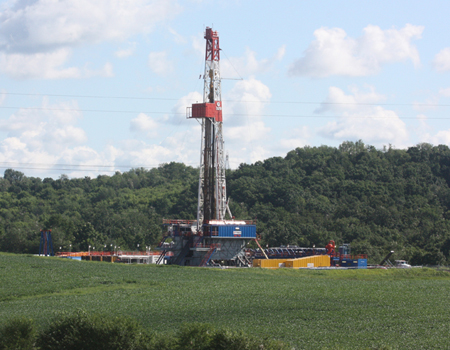Concerns Over Hydraulic Fracturing Highlighted in Duke Study
Friday, October 11, 2013

INDIANA, Pa. — A study by Duke University researchers shows elevated radioactivity, salts and metals at a site where wastewater from fracking were disposed in Indiana County, Pa.
Discharge concerns
Elevated levels of radioactivity, salts and metals have been found in river water and sediments at a site where treated water from oil and gas operations is discharged into a western Pennsylvania creek, according to the Duke study.
“Radium levels were about 200 times greater in sediment samples collected where the Josephine Brine Treatment Facility discharges its treated wastewater into Blacklick Creek than in sediment samples collected just upstream of the plant,” said Avner Vengosh, professor of geochemistry and water quality at Duke University’s Nicholas School of the Environment.
Radioactivity
The new Duke study examined the quality of shale gas wastewater from hydraulic fracturing and the stream water above and below the disposal site. The study found that some of the discharged effluent is derived from the Marcellus shale gas flowback water.
High concentrations of some salts and metals were also observed in the stream water.
“The treatment removes a substantial portion of the radioactivity, but it does not remove many of the other salts, including bromide,” Vengosh said. “When the high-bromide effluents are discharged to the stream, it increases the concentrations of bromide above the original background levels.
“This is significant because bromide increases the risks for formation of highly toxic disinfection byproducts in drinking water treatment facilities that are located downstream.”
Incomplete information
However, David Yoxtheimer, a hydrogeologist working on his Ph.D. in geosciences at Penn State University, questions some of the study.
Yoxtheimer said the study does not indicate that the wastewater plant no longer receives the fluids from fracking and hasn’t been for two years. He said it makes him wonder when the data was collected.
If it was collected in the past two years, he wonders if there could be another source of pollutants, or if it was taken more than two years ago, then what are the levels currently.
He said consumers reading into the study should question when the highest levels of radium were recorded.
Yoxtheimer said that without a timetable, it makes it difficult to know if the fracking water is to blame or if there is another reason for the high levels.
Management regulations
“The radioactivity levels we found in sediments near the outflow are above management regulations in the U.S. and would only be accepted at a licensed radioactive disposal facility,” said Robert B. Jackson, professor of environmental science at Duke.
“The facility is quite effective in removing metals such as barium from the water but concentrates sulfates, chlorides and bromides. In fact this single facility contributes four-fifths of the total downstream chloride flow at this point.”
Funding
The study was funded by the Park Foundation that has supported efforts by anti-drilling groups.




